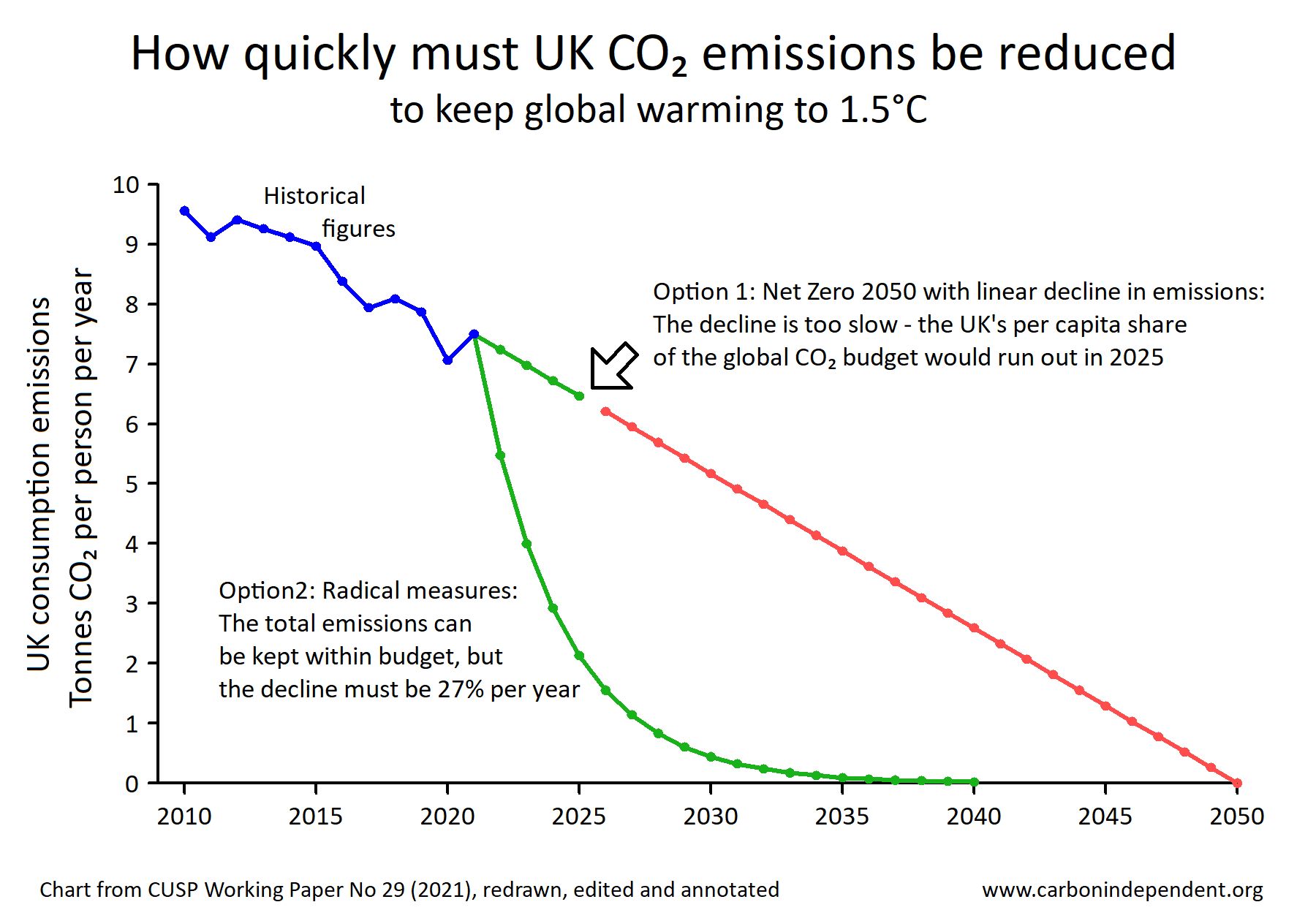
Climate urgency fallacies
- "Gradual decarbonisation is sufficient" - the "gradual decarbonisation" fallacy.
- "The net zero 2050 timescales are sufficient" - the "Net Zero 2050" fallacy.
- "Developed countries need to halve CO2 emissions by 2030" - the "global equity" fallacy.
- "An emission reduction strategy can be judged by its Net Zero date" - the "net zero date" fallacy.
The action being taken to reduce CO2 emissions is inadequate - total global emissions are still rising, and in countries where emissions are falling, the fall is too slow to meet international commitments.
There is a clear scientific consensus that urgent radical cuts in CO2 emissions are needed to comply with the Paris and other international agreements to limit global warming to 1.5°C. But most sections of society are acting as if gradual decarbonisation is all that is needed - what can be termed climate urgency denial - see document 50.
The climate urgency denial can be described in terms of several interlinked fallacies. These climate urgency fallacies appear to have become established over the last few decades, and especially the last few years.
Types of climate urgency fallacy
The most important fallacies are- "Gradual decarbonisation is sufficient"
- "The net zero 2050 timescales are suficient"
- "Developed countries need to halve CO2 emissions by 2030"
- "An emission reduction strategy can be judged by its Net Zero date"
The "Gradual decarbonisation" fallacy
The fallacy is that all that is needed to tackle climate change is gradual replacement of fossil fuels by renewable energy - no significant changes in lifestyles are needed.Instead, the scientific consensus is that the CO2 budgets for 1.5°C in high emission countries have been dwindling and will run out within a few years (e.g. in 2024 in the UK), and so radical changes are needed in these countries, including annual emission cuts of over 20% - see the chart and also further details in document 33.

The "Net Zero 2050" fallacy
The fallacy is that the Net Zero 2050 timescales of emission cuts of the UK and other governments comply with the Paris and other international agreements.Instead, the scientific consensus is that the UK Net Zero 2050 strategy would take three times the UK's per capita share of the residual global CO2 budget - see document 109.
The "global equity" fallacy
The fallacy is that developed countries need to halve CO2 emissions by 2030 in line with the halving of global CO2 emissions.Instead the Paris Agreement specifies that emissions have to be cut faster in developed countries, so that emissions in developing countries can continue to rise for a period - see document 122.
The "net zero date" fallacy
The fallacy is that a strategy can be judged by its Net Zero date, i.e. the date when net emissions are zero.Instead, the scientific consensus is that it is the total of emissions by the Net Zero date that matters.
Terminology
There are several words with meanings close to fallacy, e.g.- deceit
- delusion
- greenwash
- lie
- misconception
- misinformation
- myth
- pretence.
The term "fallacy" is preferred here because
- it does not imply a deliberate attempt to deceive
- it is in use in academic fields, such as in statistical fallacies (e.g. the "correlation equals causation" fallacy), and in fallacies of logical reasoning (e.g. the "straw man" fallacy).
First published: 25 Sep 2022
Last updated: 12 Dec 2022

 ✖
✖